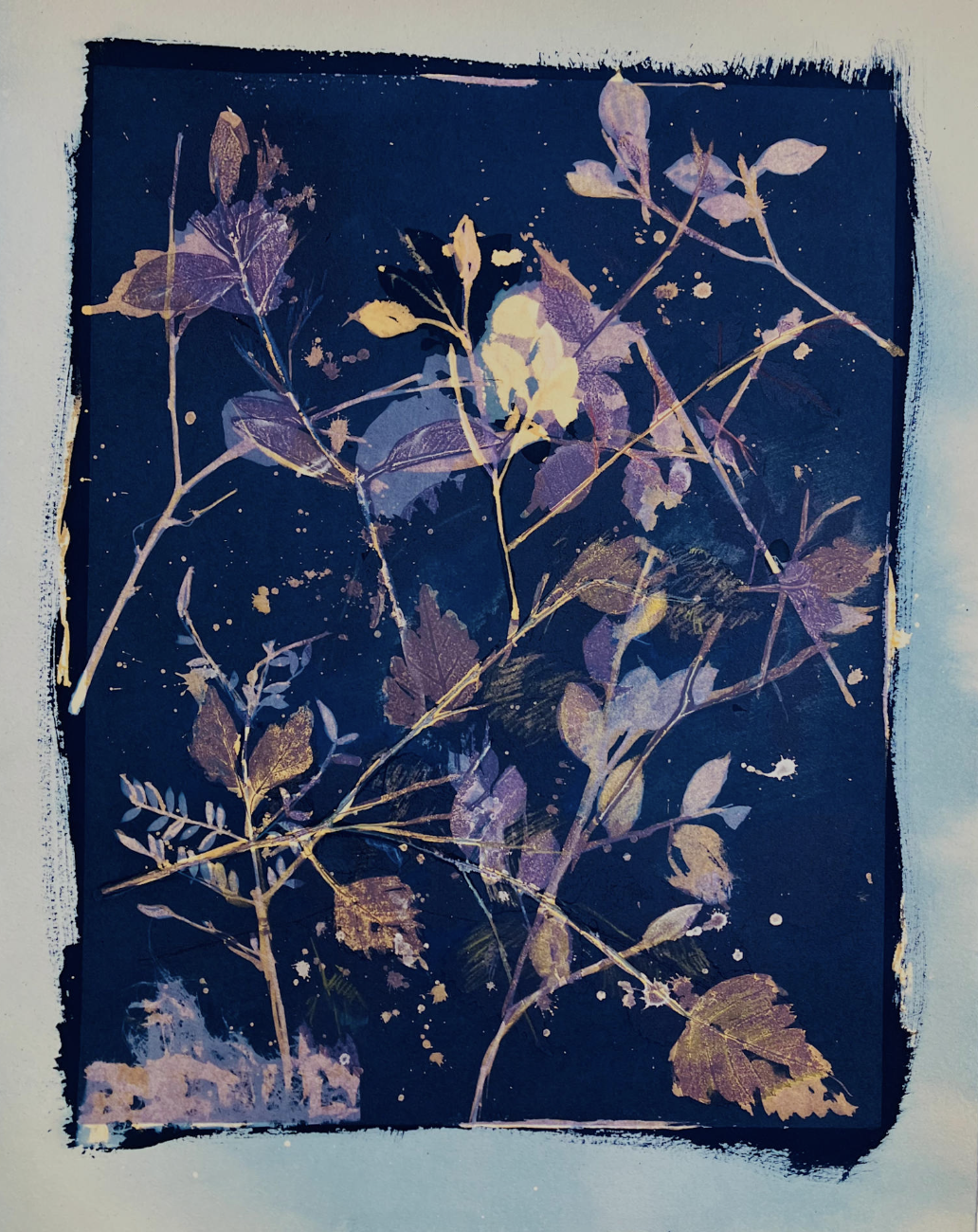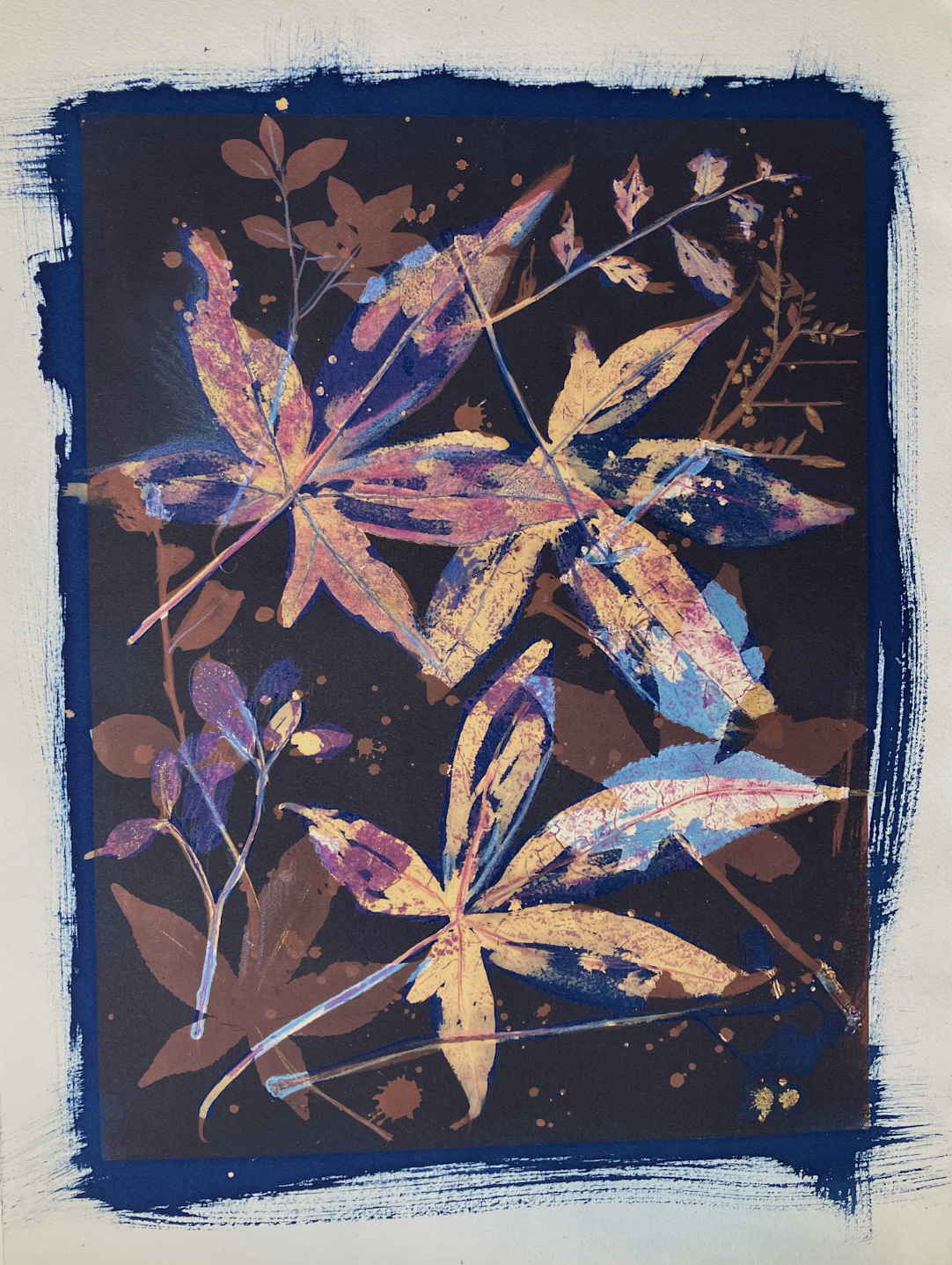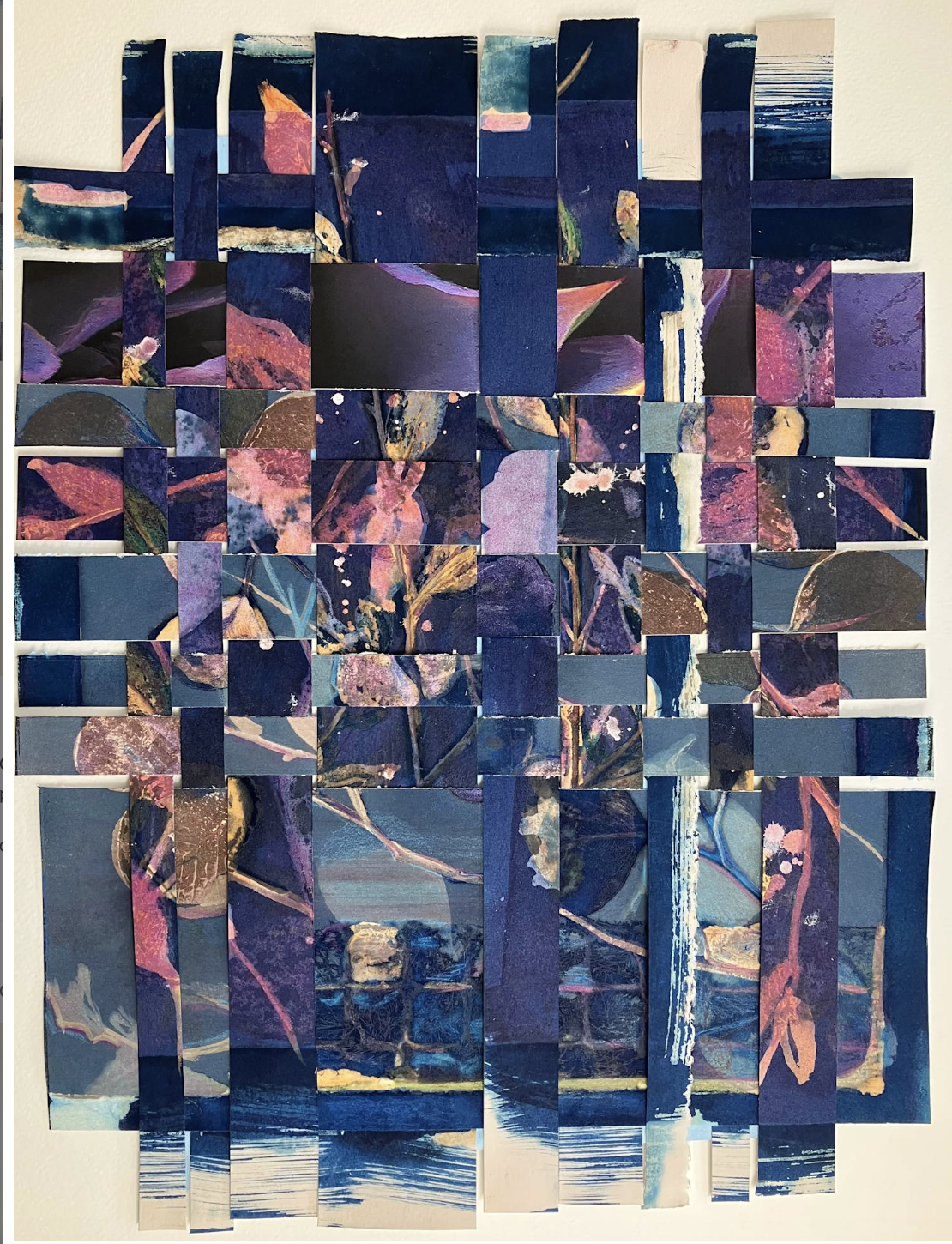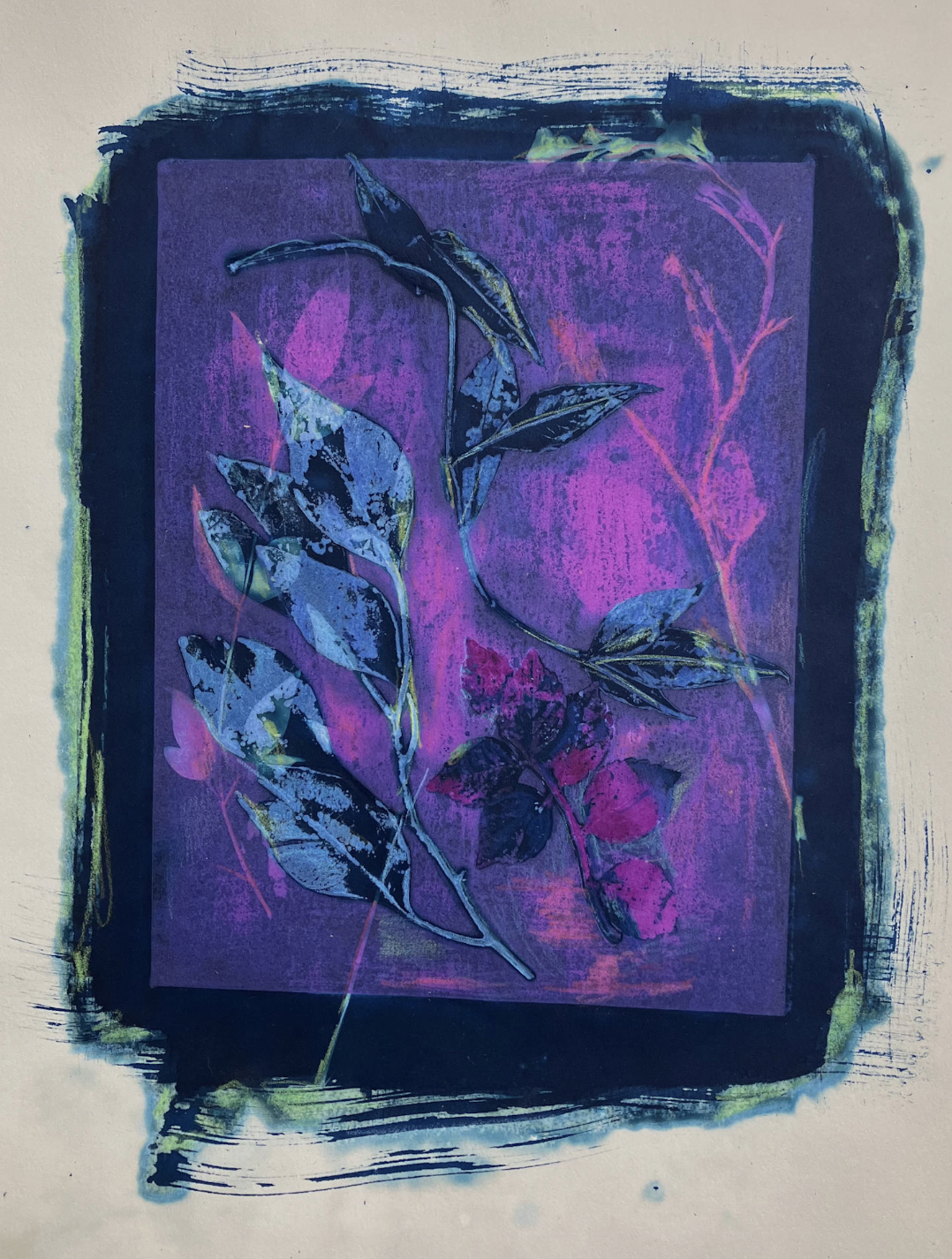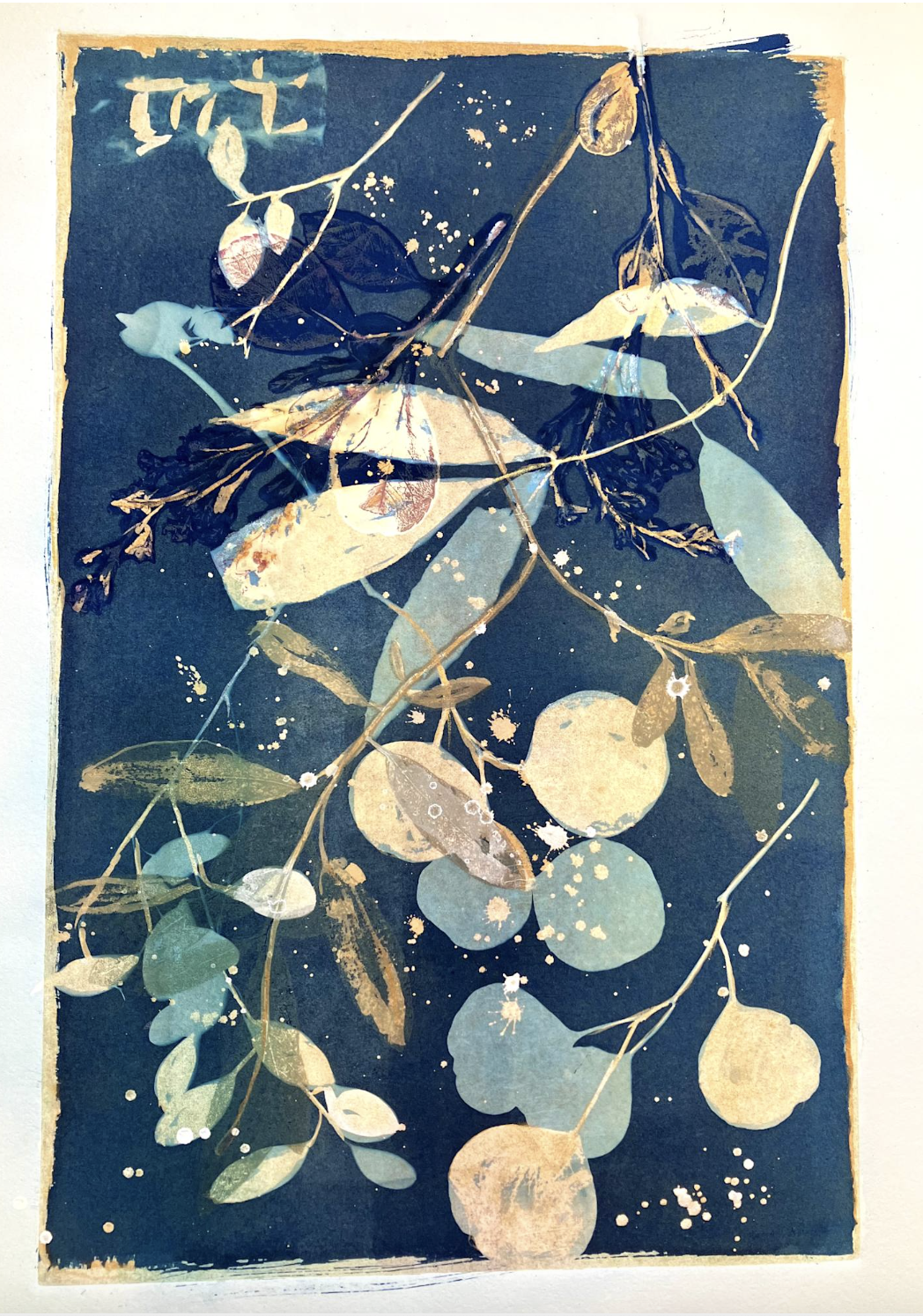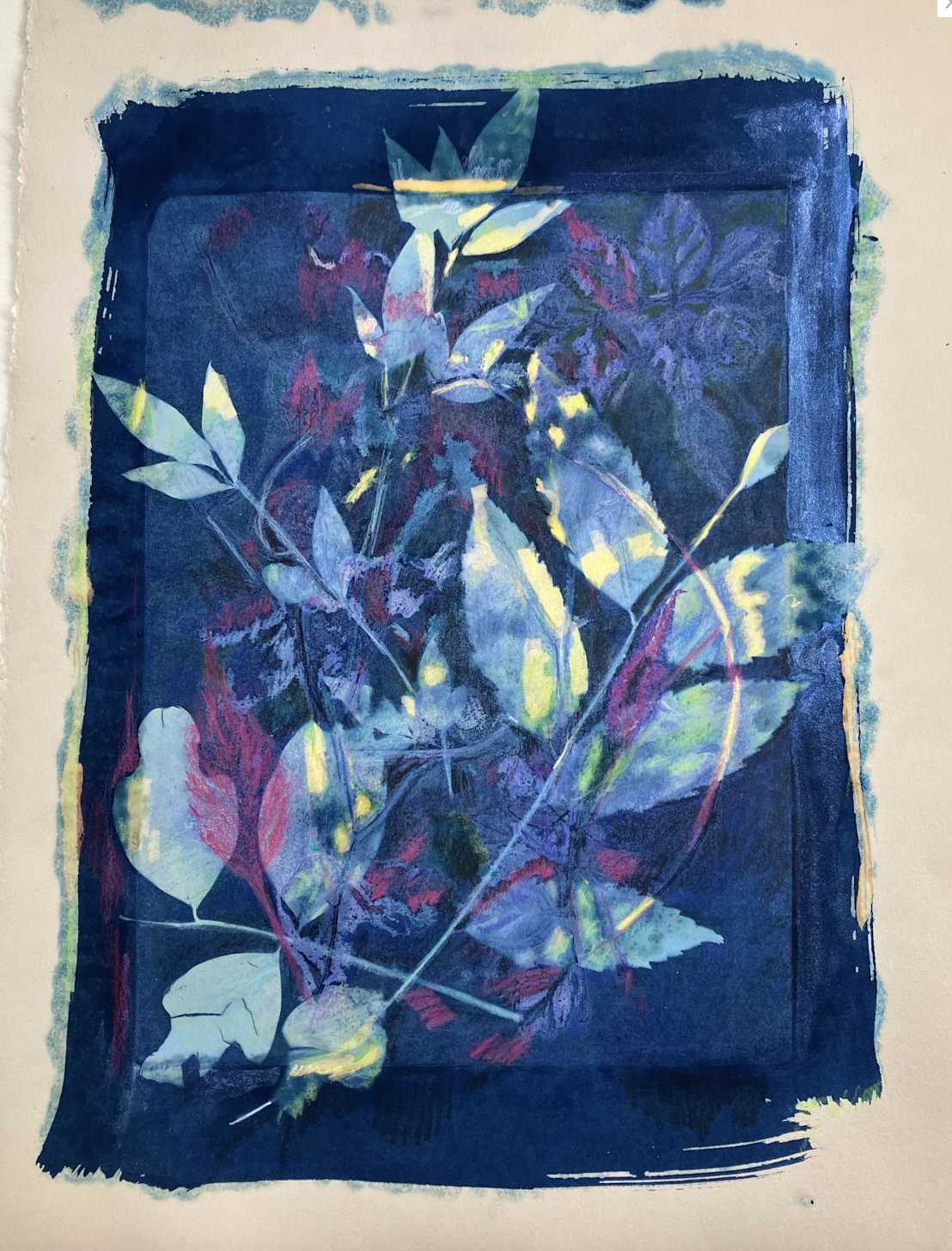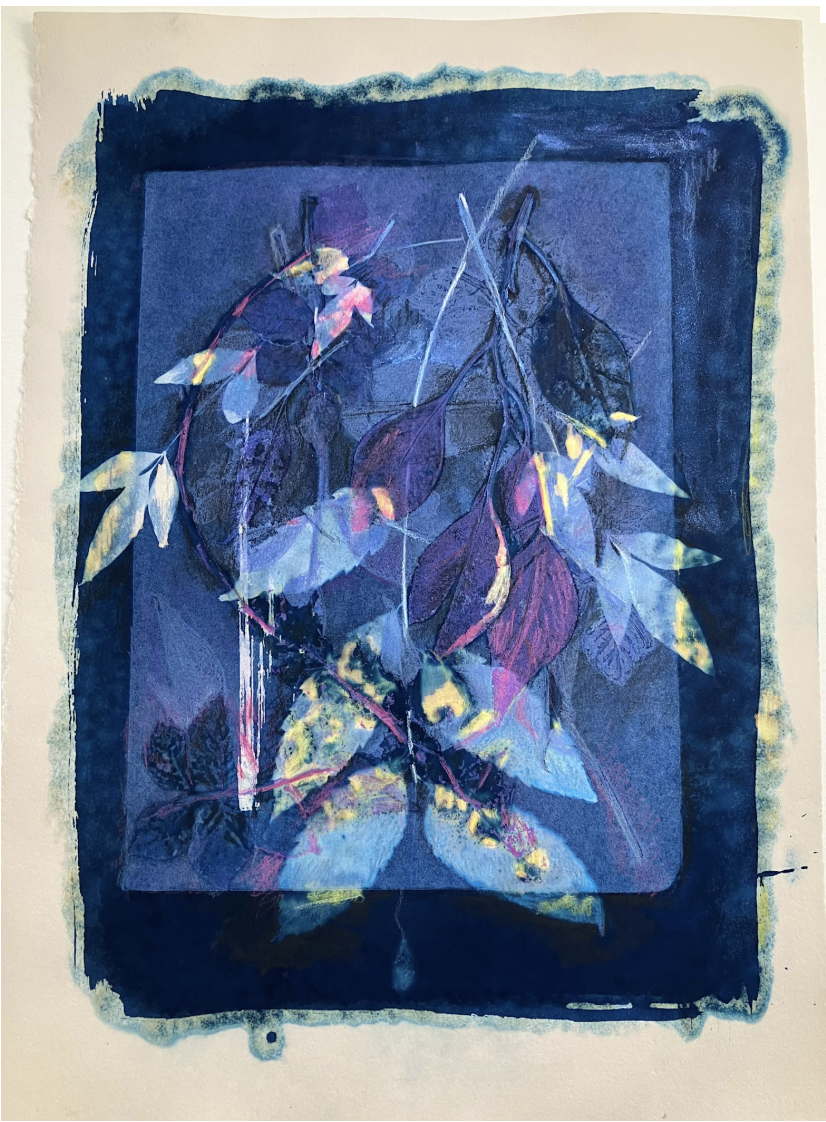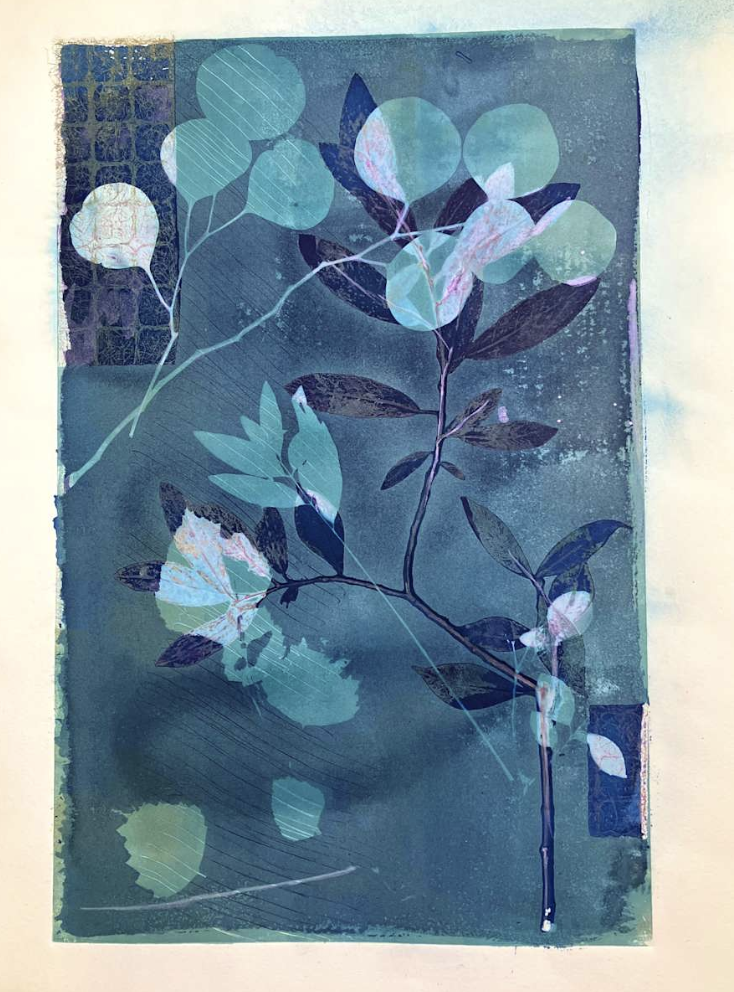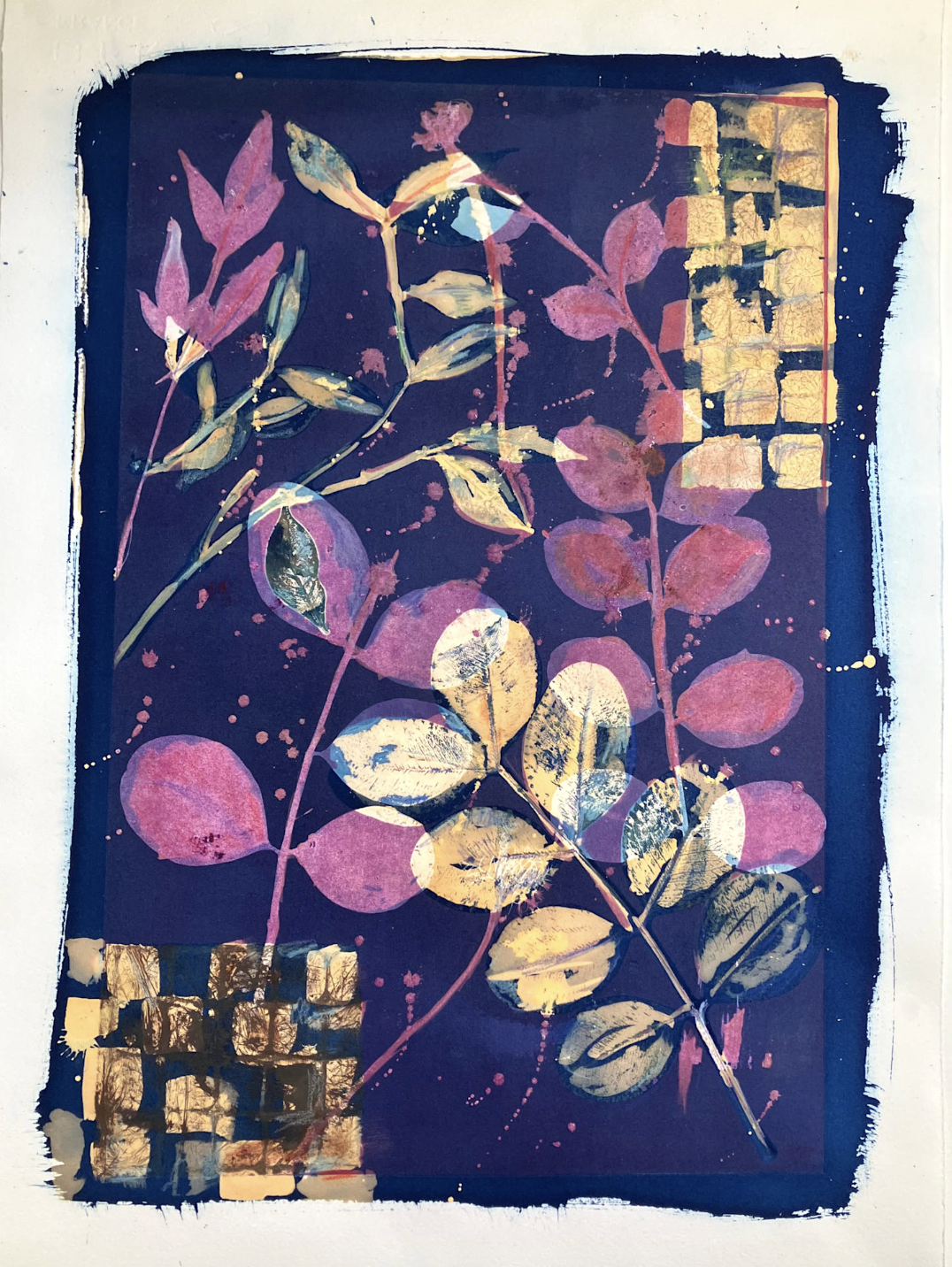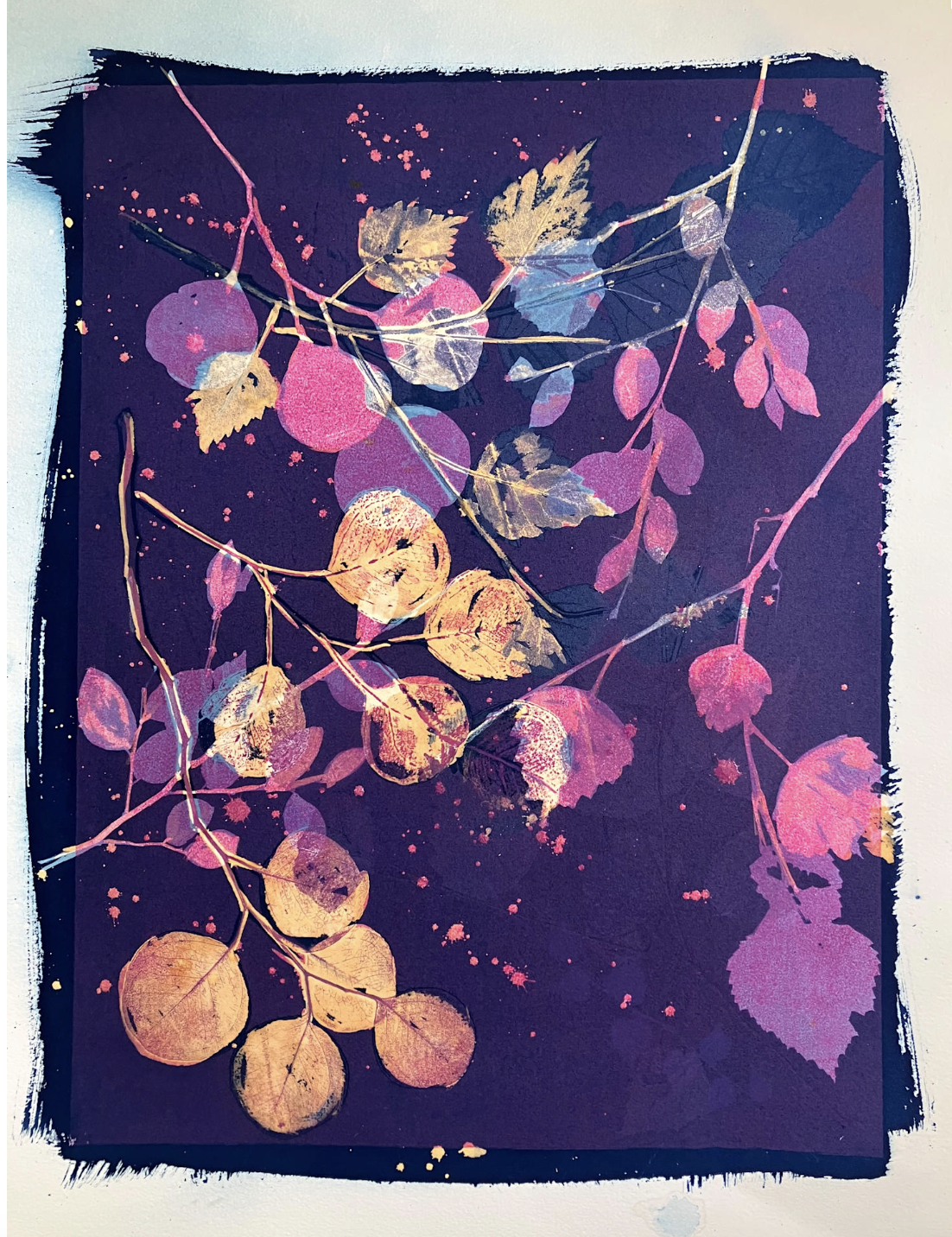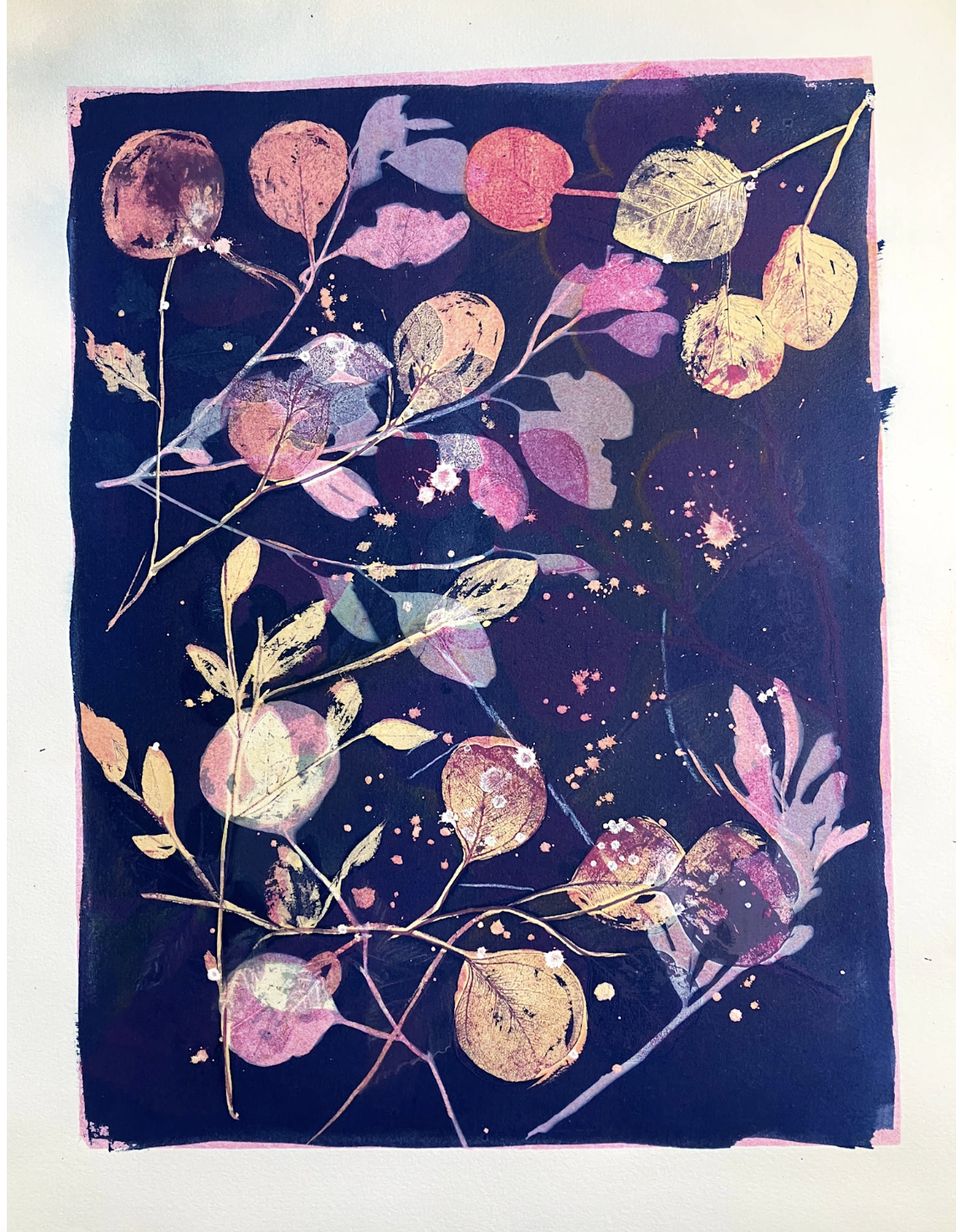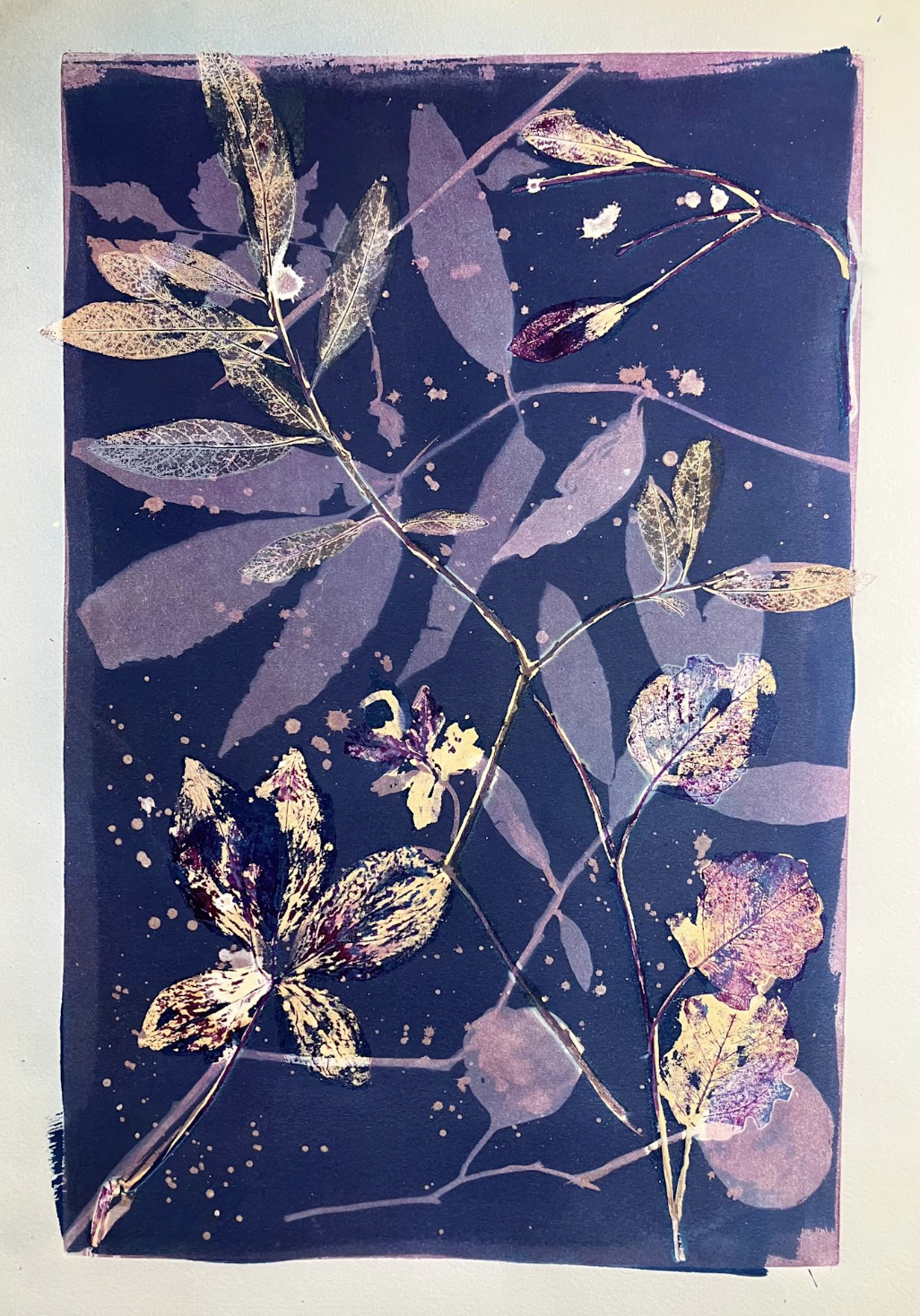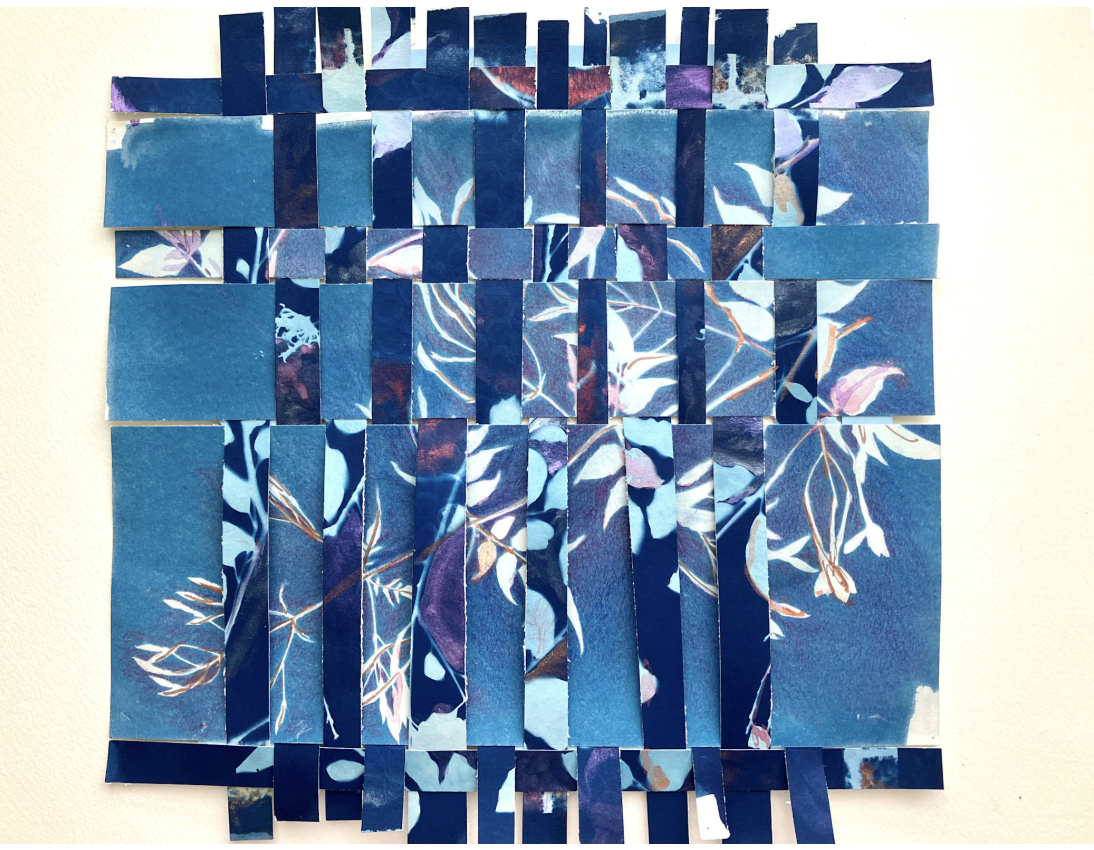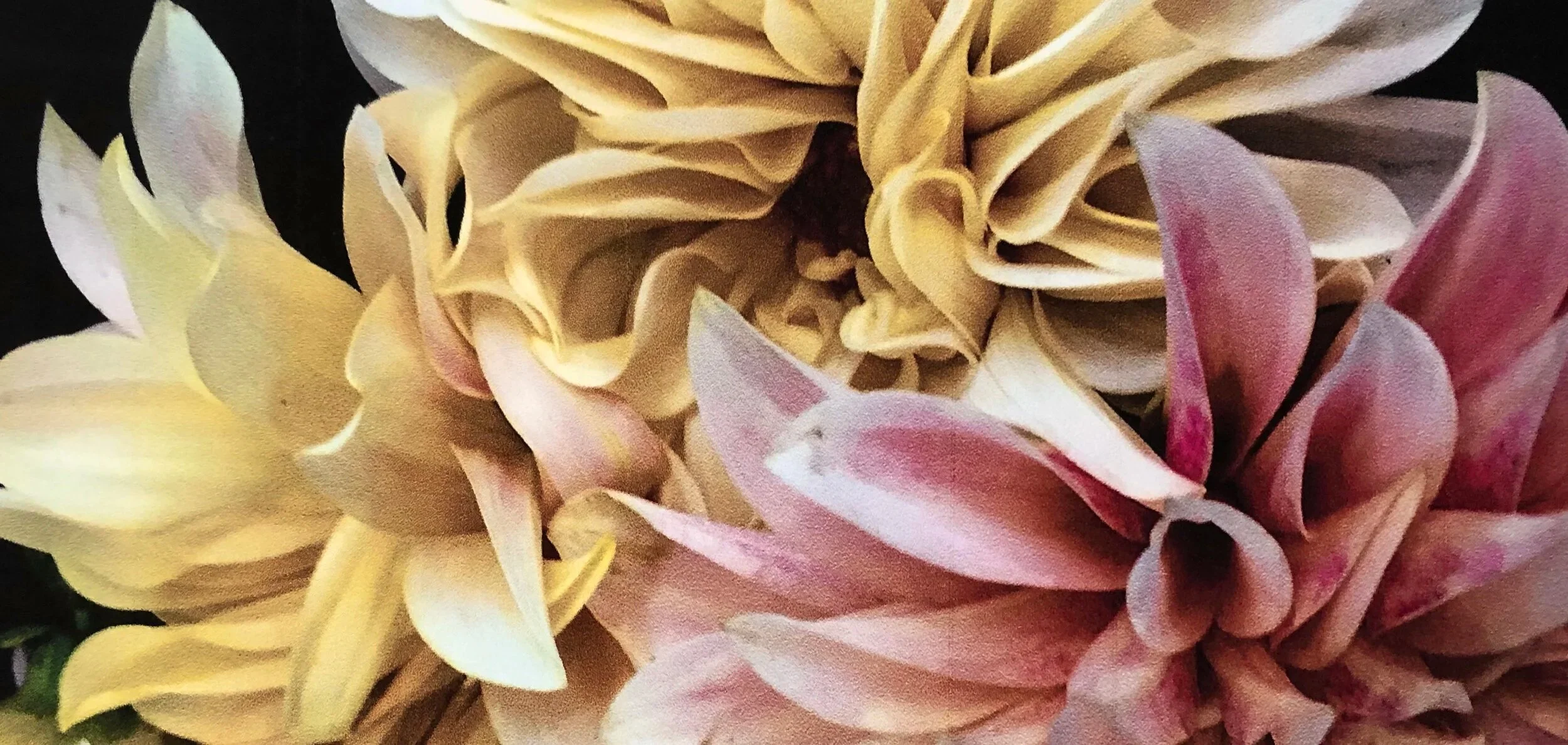
ALL I SEE IS BLUE
This body of work explores the intersection between nature and light. Each piece begins with my creating a monoprint, using the organic imprint of real plants—leaves or flowers of various size and shape, pressed, inked and printed on a press thus creating a monoprint. I then paint the cyanotype emulation (a historic photographic process*) atop my botanical monoprints. Once the emulsion has dried, additional layers of leaves or textural paper are added. By applying the light-sensitive emulsion to the monoprint and then exposing it to UV light or sunlight it can then create a rich Prussian blue pigment atop of the monoprint.
The emulsion is then washed thoroughly with water, and the print is then left to dry. On occasion, I use various toning solutions, such as soda ash or turmeric to lift the cyanotype color. At times I also add watercolor paints to interact with the cyanotype and monoprint below. This synthesis of printmaking, photography and painting allow me to blur the boundaries, between layers, processes and interpretation of the image.
This work is rooted in my desire to preserve the fleeting impressions of nature, the botanical forms that may wilt or die as the seasons pass. Ultimately, my work is about paying attention, to the quiet details in nature.
*Cyanotype printing is a photographic printing process invented by Sir John Herschel (1792–1871) in 1842. Also known as shadowgraphs or blueprints, this relatively simple process produces prints that are cyan blue known as Cyanotypes. The mixing together of these 2 chemicals Potassium ferricyanide (A) and Ferric Ammonium Citrate (B) create a light sensitive solution.








